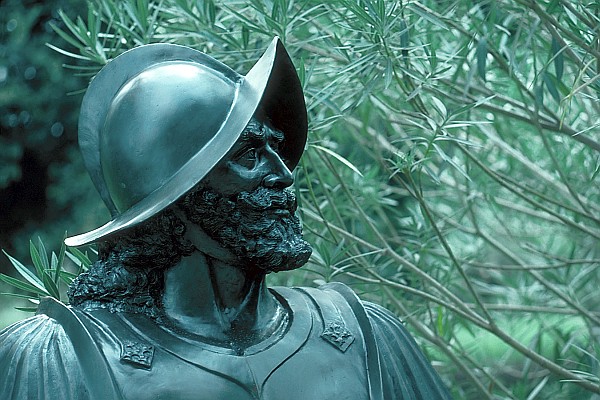| REPORT ON DFW AREA VISITOR ATTRACTIONS |
 |
|
500 Years of Texas History The history of Texas and the Gulf Coast is much older than the written history, beginning with over 20,000 years of archaeological evidence of numerous indigenous peoples. But its written history gives valuable insights into the region. In fact, the written description of Texas and the Gulf Coast by Cabeza de Vaca is the oldest written history of any place in the modern boundaries of the United States, making it one of the nation's most significant documents. Following are some key dates in the earliest written history of the Gulf Coast and the Texas interior: June 15, 1527 - The Narvaez expedition, including Alvar Nunez Cabeza de Vaca, left Spain. September 17, 1527 - The expedition arrived in the Caribbean at Santo Domingo. November 5, 1527 - The expedition arrived at Cuba, where they remained for the winter. February 20, 1528 - The expedition departed Xagua, Cuba to travel to the north side of the island. April 12, 1528 - The expedition sighted Florida, likely in the Tampa Bay region. June 17, 1528 - Traveling over land, the expedition sighted Apalachen (in the Florida Panhandle). September 22, 1528 - The expedition departed Florida on five crudely-built wooden rafts or barges. October 30, 1528 - The expedition arrived at the Mississippi River. November 6, 1528 - The barge commanded by Cabeza de Vaca wrecked on the Louisiana or Southeast Texas coast on what was described as the "Island of Doom". 1530-1534 - Cabeza de Vaca spent several years working as a merchant, traveling and trading goods with the indigenous peoples of West Louisiana and East Texas, likely covering woodland trails between the Red River and the Trinity River, and possibly reaching as far as Northeast Texas. September 22, 1534 - Cabeza de Vaca and three other survivors decided to find an overland route to Mexico City. March 1536 - Four survivors, including Cabeza de Vaca and Esteban, encounter the Spanish on the west coast of Mexico. July 24, 1537 - The four survivors arrive in Mexico City. April 10, 1537 - Cabeza de Vaca departs from Mexico to Spain. August 9, 1537 - Cabeza de Vaca arrives in Lisbon. In 1539, Esteban lead a group of Spanish and indigenous soldiers from Southern Mexico to Arizona, where he was killed by Zuni Indians in the border region of modern Arizona and New Mexico. In 1540, Francisco Vasquez de Coronado explored and conquered many pueblos of northern New Mexico, reaching as far as the Texas Panhandle and Kansas. From 1539-1542, Hernando de Soto explored the present-day Southeastern United States, from Florida to Arkansas. Upon De Soto's death, Luis de Moscoso Alvarado continued the expedition to Northeast and Central Texas. Prospectus Dallas-Fort Worth and the greater North Texas region is in the far reaches of the three expeditions (Cabeza de Vaca, approached from the south; De Soto from the east; and Coronado from the west) and is home to substantial indigenous history. The Narvaez expedition and the return of the four survivors, including Cabeza de Vaca and Esteban, links together and gives understanding to impactful events in the history of the Americas, from Hernan Cortes and the Spanish conquest of Mexico City to the establishment of Spain's northern colonies in Texas and New Mexico. These events are relative to Texas today. In order to serve a mass population in the vicinity of DFW, North Texas should be the site of an interpretive center (possibly established by the National Park Service) and numerous educational and commemorative activities to promote international cultural exchange, utilizing the 500 year anniversary of Cabeza de Vaca's time spent in the region as a trader and his historic journal as a catalyst. The Narvaez expedition, and the subsequent route of the expedition's survivors, merits a national (in fact, international) historic trail with interpretation at key locations in Florida, Alabama, Mississippi, Louisiana, Texas, Mexico and the Caribbean. Stay Connected Follow interesting posts on Facebook at www.facebook.com/texasculture and www.facebook.com/imagineamuseum, and provide comments there. Continue to the Full Report Feature: The BIG 5 for BIG D Five big initiatives for BIG D, or Five big challenges for BIG D Media Archive and Resources Press Releases Return to Top of Page |
| © Copyright 2017 by Imagine a Museum Report Hosted by Digital Story Resource Center |